Intel 11th Generation Core Tiger Lake-H Performance Review: Fast and Power Hungry
by Brett Howse & Andrei Frumusanu on May 17, 2021 9:00 AM EST- Posted in
- CPUs
- Intel
- 10nm
- Willow Cove
- SuperFin
- 11th Gen
- Tiger Lake-H
CPU Tests: Legacy and Web
In order to gather data to compare with older benchmarks, we are still keeping a number of tests under our ‘legacy’ section. This includes all the former major versions of CineBench (R15, R11.5, R10) as well as x264 HD 3.0 and the first very naïve version of 3DPM v2.1. We won’t be transferring the data over from the old testing into Bench, otherwise it would be populated with 200 CPUs with only one data point, so it will fill up as we test more CPUs like the others.
The other section here is our web tests.
Web Tests: Kraken, Octane, and Speedometer
Benchmarking using web tools is always a bit difficult. Browsers change almost daily, and the way the web is used changes even quicker. While there is some scope for advanced computational based benchmarks, most users care about responsiveness, which requires a strong back-end to work quickly to provide on the front-end. The benchmarks we chose for our web tests are essentially industry standards – at least once upon a time.
It should be noted that for each test, the browser is closed and re-opened a new with a fresh cache. We use a fixed Chromium version for our tests with the update capabilities removed to ensure consistency.
Mozilla Kraken 1.1
Kraken is a 2010 benchmark from Mozilla and does a series of JavaScript tests. These tests are a little more involved than previous tests, looking at artificial intelligence, audio manipulation, image manipulation, json parsing, and cryptographic functions. The benchmark starts with an initial download of data for the audio and imaging, and then runs through 10 times giving a timed result.
We loop through the 10-run test four times (so that’s a total of 40 runs), and average the four end-results. The result is given as time to complete the test, and we’re reaching a slow asymptotic limit with regards the highest IPC processors.
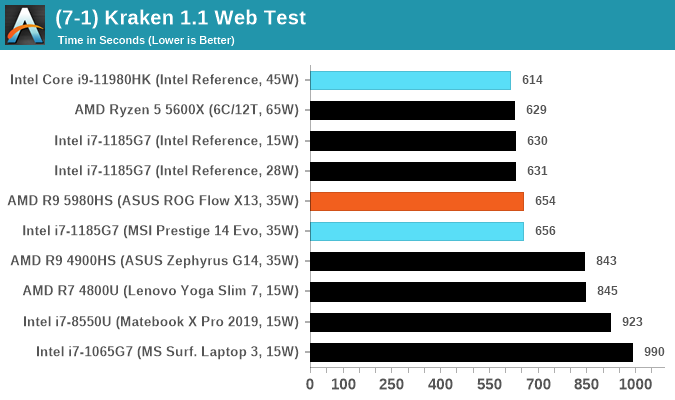
Google Octane 2.0
Our second test is also JavaScript based, but uses a lot more variation of newer JS techniques, such as object-oriented programming, kernel simulation, object creation/destruction, garbage collection, array manipulations, compiler latency and code execution.
Octane was developed after the discontinuation of other tests, with the goal of being more web-like than previous tests. It has been a popular benchmark, making it an obvious target for optimizations in the JavaScript engines. Ultimately it was retired in early 2017 due to this, although it is still widely used as a tool to determine general CPU performance in a number of web tasks.
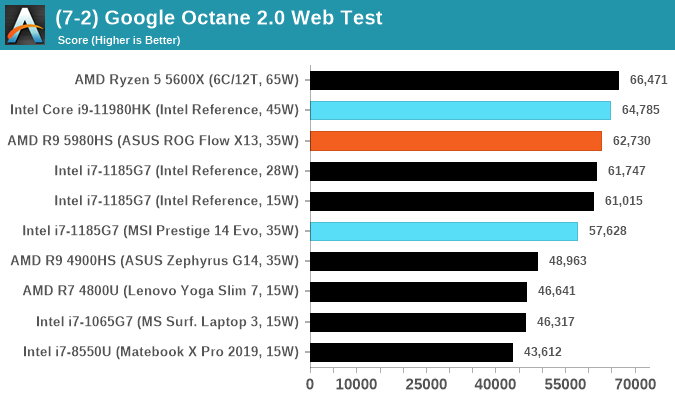
Speedometer 2: JavaScript Frameworks
Our newest web test is Speedometer 2, which is a test over a series of JavaScript frameworks to do three simple things: built a list, enable each item in the list, and remove the list. All the frameworks implement the same visual cues, but obviously apply them from different coding angles.
Our test goes through the list of frameworks, and produces a final score indicative of ‘rpm’, one of the benchmarks internal metrics.
We repeat over the benchmark for a dozen loops, taking the average of the last five.
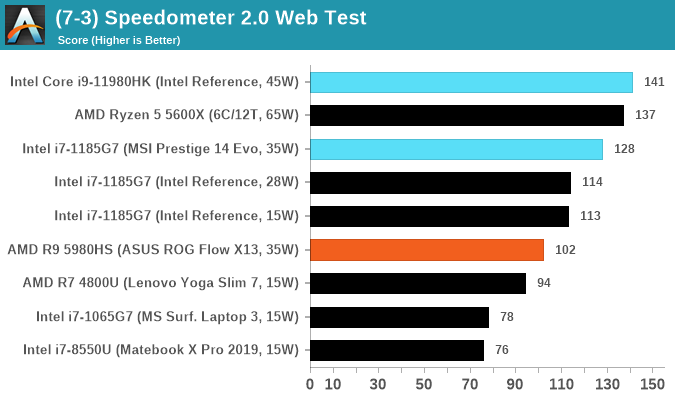
Legacy Tests

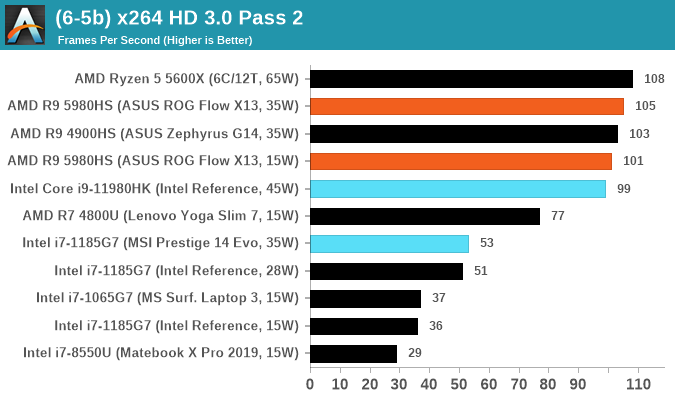
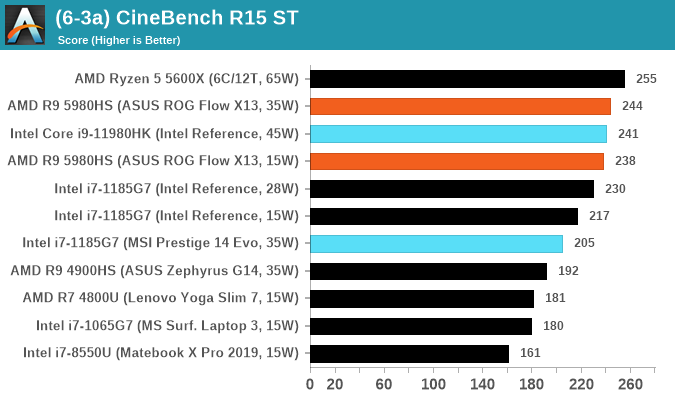
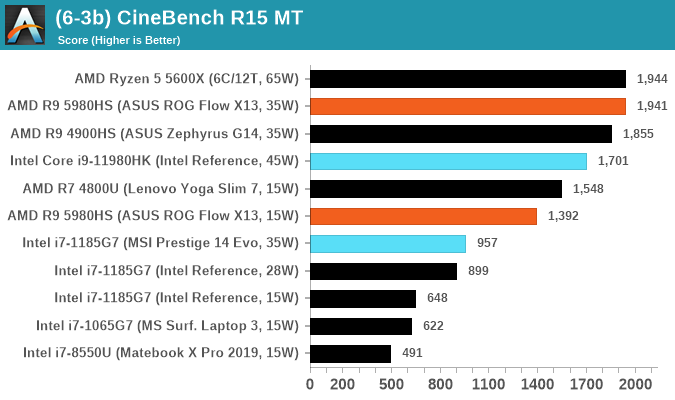


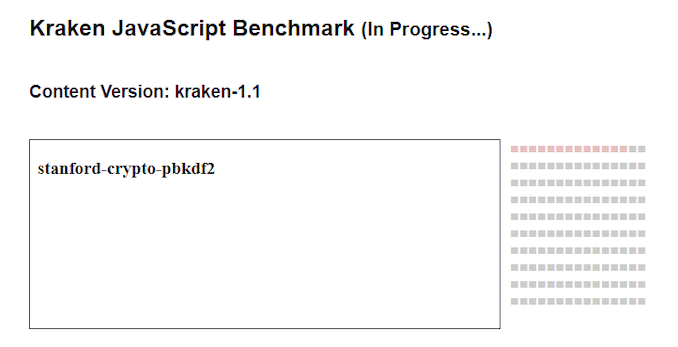
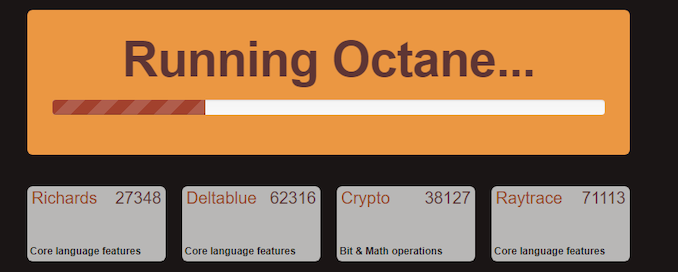









229 Comments
View All Comments
danjw - Monday, May 17, 2021 - link
No, not really. This is Intel's REFERENCE SYSTEM and it only trades blows with an AMD system that is a product. How is this competitive? You have to realize that the fans on this system aren't tuned for a consumer, they are tuned to make Intel's processor look better. If you read Andrei's conclusions, it is a processor for a laptop no one is selling anymore. It is a 65W processor battling a 35W processor.Their are two reasons this may sell well. AMD's systems are still hard to find and the fact that many consumers still believe that the Intel Inside label is important.
mode_13h - Monday, May 17, 2021 - link
> You have to realize that the fans on this system aren't tuned for a consumer,> they are tuned to make Intel's processor look better.
Not to argue with your main point, but it's worth noting that even when Intel gets to design their own thermal solution, it still fell on its face @ the stock 65W settings. That's pretty bad.
mode_13h - Monday, May 17, 2021 - link
Maybe they should've had the team design it who rigged up that Cascade Lake workstation demo to run all cores at like 5 GHz. Sure, it'd have been the size of a briefcase and sounded like a leaf blower, but at least the it'd clock well!Andrei Frumusanu - Monday, May 17, 2021 - link
Just to make it clear and visible: The i9-11980HK is advertised as a default 45W CPU. The fact that the system came in 65W mode shouldn't be seen as a "stock" behaviour of that SKU.mode_13h - Monday, May 17, 2021 - link
> The fact that the system came in 65W mode shouldn't be seen as a "stock" behaviour of that SKU.So, what are we to make of it? Was Intel trying to rig the benchmarks, then ???
jospoortvliet - Wednesday, May 19, 2021 - link
Pfffif they were they did it in a stunningly incompetent way... hahaSpunjji - Thursday, May 20, 2021 - link
@mode_13h - they did that with their previous Ice and Tiger Lake reference platforms (100% fan speed constantly, yes please) so it makes sense they did the same again here. 😬morello159 - Monday, May 17, 2021 - link
Another thing to consider is that Intel platforms have been much more stable, for me, than AMD. My ASUS G14 with the Ryzen 4900HS, for example, *can* deliver both outstanding battery life and amazing performance. However, there are often times when the system draws extra power for seemingly no reason. There are whole forums dedicated to tweaking the G14's power settings to fix high idle draw. I've also experienced some weird freezes, lockups, etc. It's a great laptop, but I wouldn't use it in a professional setting where I need it to work all the time.My i7-10810U powered Dell Latitude 9510, while quite slow in comparison, gets 12 hours of battery life every time and can run days at a time without any hiccups.
Hifihedgehog - Monday, May 17, 2021 - link
> "Intel platforms have been much more stable, for me, than AMD"LOL. Even with Xe, I still see major graphical issues with 3D games which in some cases even refuse to render. It has gotten way better than five years ago, but AMD's graphic drivers are still far and away better. Stop reaching...
Spunjji - Tuesday, May 18, 2021 - link
This reply doesn't really contradict morello159's main point, though.I've had similar experiences - my 8th gen Intel Dell work system is rock solid, if unspectacular.
My 4800H + 5600M Dell gaming system has... issues. A lot of them appear to be Dell's fault, TBH, but not all of them are.